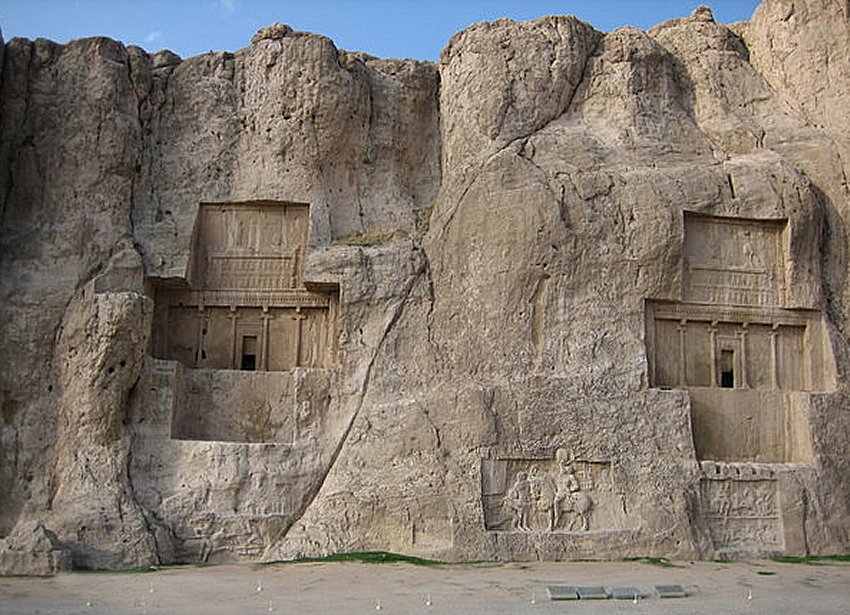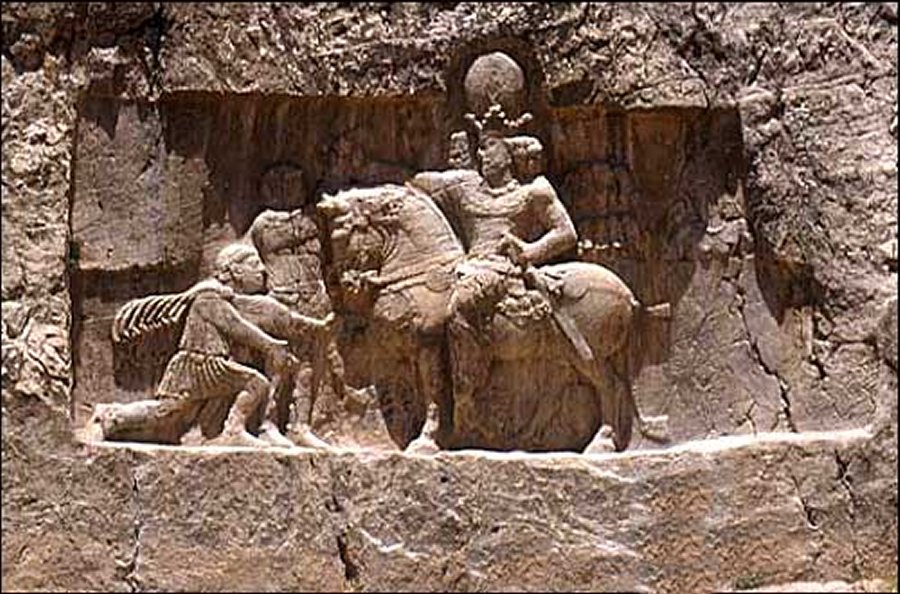Naqsh-e Rostam: Spectacular Tomb Complex With Rock Reliefs From Elamite To Sasanian Times
A. Sutherland - AncientPages.com - An incredible complex of tombs and artworks known as Naqsh-e Rostam ("Picture of Rostam"), or Necropolis, is located outside of the city of Shiraz and only a few kilometers northwest of Persepolis - the capital of the ancient Achaemenid Empire - in central Iran.
Naqsh-e-Rostam. Image credit: Iran Chamber Society
Naqsh-e Rostam monument is a perpendicular wall of rock with four similar tombs, cut considerably from the bottom of the valley.
The rock art below the tombs with sculptures from Elamite, Achaemenid, and Sassanid periods on mountains and rock is one of the unique and most beautiful examples of stone masonry of the historical and ancient period.
The Sasanian carvings are believed to represent the mythical hero Rostam (or Rustam), who fought legendary monsters such as the dragon and the White Demon and was described in the great Persian Epic of the Kings, 'Shahname,' completed in 1010 CE.
A rock relief at Naqsh-e Rostam, depicting the triumph of Shapur I over the Roman Emperor Valerian, and Philip the Arabian. Image credit: Iran Chamber Society
The four impressive rock tombs - cut at a considerable height from the bottom of the valley - are all elaborately carved into the side of a stone mountainside. The perfection of the building's right angles testifies to the skill of the builders.
The tombs belong to Achaemenid kings and are locally known as the 'Persian crosses, due to the shape of the facades of the graves.
Seven oversized and rich ornamented reliefs dedicated to the Achaemenid kings belong to the early first millennium BC.
Darius 2's tomb, Naqsh-e-Rostam. Darius The Great's Inscription at Naqshe Rostam, Iran; right: Darius, source
At the center of each cross is an entrance to each tomb, which opens into a small chamber where the king lay in a coffin. The horizontal beam of each tomb's facades is believed to be a replica of the palace's entrance at Persepolis.
Naqsh-e Rostam was already an important place when king Darius I the Great (522-486 BC) ordered his monumental tomb to be carved into the cliff.
Later, similar royal rock tombs were added, and they are believed to belong to Darius' son and successor Xerxes (486-465), his son Artaxerxes I Makrocheir (465-424), and his grandson Darius II Nothus (423-404), whose original name was Ochus. He was often called Nothus ('Bastard') because he was the son of King Artaxerxes I and a concubine from Babylon.
Left: Relief of Xerxes in Naqsh-e Rustam; Right: Artaxerxes III (Artaxšaçā) - Emperor of Achaemenid Persia. Image via Wikiwand
There is also a fifth tomb, but it's unfinished. Archaeologists are almost sure that the tombs were closed after the burial. After Alexander the Great had overthrown the Achaemenid Empire, the doors were smashed, and the graves were looted.
Today Naqsh-e Rostam is an abandoned ancient site, visited only by a small group of tourists.
Written by – A. Sutherland - AncientPages.com Senior Staff Writer
Copyright © AncientPages.com All rights reserved. This material may not be published, broadcast, rewritten or redistributed in whole or part without the express written permission of AncientPages.com
Expand for referencesMore From Ancient Pages
-
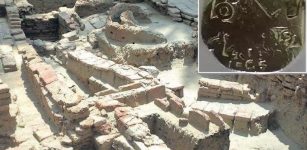 Keeladi Ancient Site Of Tamil Nadu – A Punch-Marked Silver Coin Unearthed
Archaeology | Jul 31, 2021
Keeladi Ancient Site Of Tamil Nadu – A Punch-Marked Silver Coin Unearthed
Archaeology | Jul 31, 2021 -
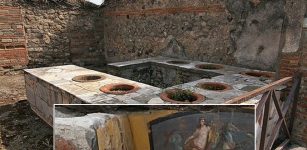 Another 2,000-Year-Old ‘Snack Bar’ Discovered In Pompeii
Archaeology | Apr 10, 2019
Another 2,000-Year-Old ‘Snack Bar’ Discovered In Pompeii
Archaeology | Apr 10, 2019 -
 Unraveling The Mystery Of The Phoenix Bird – Symbol Of The Sun And Eternal Rebirth Of Life
Egyptian Mythology | Nov 6, 2023
Unraveling The Mystery Of The Phoenix Bird – Symbol Of The Sun And Eternal Rebirth Of Life
Egyptian Mythology | Nov 6, 2023 -
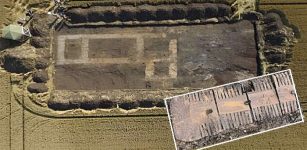 Lincolnshire’s Prehistoric Henge And A Sacred Site Dating Back Hundreds Of Years
Archaeology | Apr 6, 2024
Lincolnshire’s Prehistoric Henge And A Sacred Site Dating Back Hundreds Of Years
Archaeology | Apr 6, 2024 -
 Did Lead Pollution Cause IQ Declines Among Ancient Romans?
Places | Jan 8, 2025
Did Lead Pollution Cause IQ Declines Among Ancient Romans?
Places | Jan 8, 2025 -
 Ancient Mystery From The Age Of Taurus And The Murdered Astronomer – Evidence In The Arctic ? – Part 2
Ancient Mysteries | Nov 1, 2019
Ancient Mystery From The Age Of Taurus And The Murdered Astronomer – Evidence In The Arctic ? – Part 2
Ancient Mysteries | Nov 1, 2019 -
 A 5,000-Year-Old Anatolian Sword Identified In Armenian Monastery In Venice
Artifacts | Feb 28, 2020
A 5,000-Year-Old Anatolian Sword Identified In Armenian Monastery In Venice
Artifacts | Feb 28, 2020 -
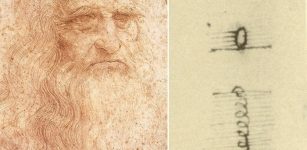 Leonardo da Vinci’s Paradox Cracked
Ancient Technology | Jan 19, 2023
Leonardo da Vinci’s Paradox Cracked
Ancient Technology | Jan 19, 2023 -
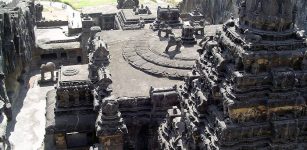 Cannabis Protected India’s Famous Ellora Caves From Decay For 1,500 Years
Archaeology | Mar 12, 2016
Cannabis Protected India’s Famous Ellora Caves From Decay For 1,500 Years
Archaeology | Mar 12, 2016 -
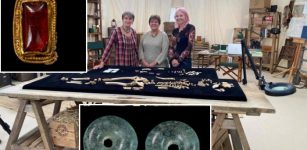 More Anglo-Saxon Burials And Artifacts Found In Lincolnshire, UK
Archaeology | Jan 11, 2024
More Anglo-Saxon Burials And Artifacts Found In Lincolnshire, UK
Archaeology | Jan 11, 2024 -
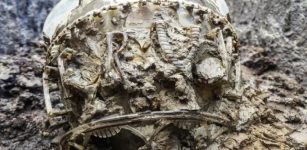 Extremely Rare Roman Glass Vase Adorned With A Message Found In France
Archaeology | Nov 18, 2020
Extremely Rare Roman Glass Vase Adorned With A Message Found In France
Archaeology | Nov 18, 2020 -
 Paris Catacombs: Huge Underground Labyrinth Full Of Secrets
Featured Stories | Jan 3, 2016
Paris Catacombs: Huge Underground Labyrinth Full Of Secrets
Featured Stories | Jan 3, 2016 -
 Escape Tunnel From Crusader Citadel In Tiberias To Sea Of Galilee – Discovered
Archaeology | Jun 15, 2017
Escape Tunnel From Crusader Citadel In Tiberias To Sea Of Galilee – Discovered
Archaeology | Jun 15, 2017 -
 Bulgarian Archaeologists Find Nearly 3000 Coins In Clay Pot At Sofia Dig
News | Sep 8, 2015
Bulgarian Archaeologists Find Nearly 3000 Coins In Clay Pot At Sofia Dig
News | Sep 8, 2015 -
 Humans’ Oldest Jawed Ancestor Is A 439-Million-Year-Old Spiky Shark – Surprising Discovery Shows
Archaeology | Sep 29, 2022
Humans’ Oldest Jawed Ancestor Is A 439-Million-Year-Old Spiky Shark – Surprising Discovery Shows
Archaeology | Sep 29, 2022 -
 Mysterious Hieroglyphs Point To The Location Of Queen Nefertiti’s Tomb?
Archaeology | Sep 29, 2022
Mysterious Hieroglyphs Point To The Location Of Queen Nefertiti’s Tomb?
Archaeology | Sep 29, 2022 -
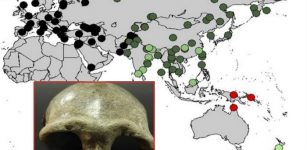 Denisovan DNA Found In The Genome Of Oldest Human Fossil Discovered In Mongolia
Archaeology | Oct 30, 2020
Denisovan DNA Found In The Genome Of Oldest Human Fossil Discovered In Mongolia
Archaeology | Oct 30, 2020 -
 Famous Viking Warrior Eric “Bloodaxe” Haraldsson: King Of Norway
Featured Stories | Sep 29, 2016
Famous Viking Warrior Eric “Bloodaxe” Haraldsson: King Of Norway
Featured Stories | Sep 29, 2016 -
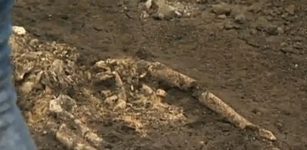 Eastern Necropolis Of Ancient Thracian And Roman City Of Serdica – Unearthed
Archaeology | Apr 10, 2017
Eastern Necropolis Of Ancient Thracian And Roman City Of Serdica – Unearthed
Archaeology | Apr 10, 2017 -
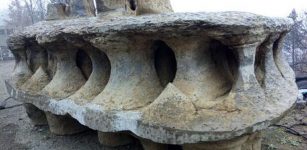 Curious Giant Shaped Rock In China – An Ancient Man-Made Construction Or Natural Formation?
Featured Stories | Jun 26, 2017
Curious Giant Shaped Rock In China – An Ancient Man-Made Construction Or Natural Formation?
Featured Stories | Jun 26, 2017

